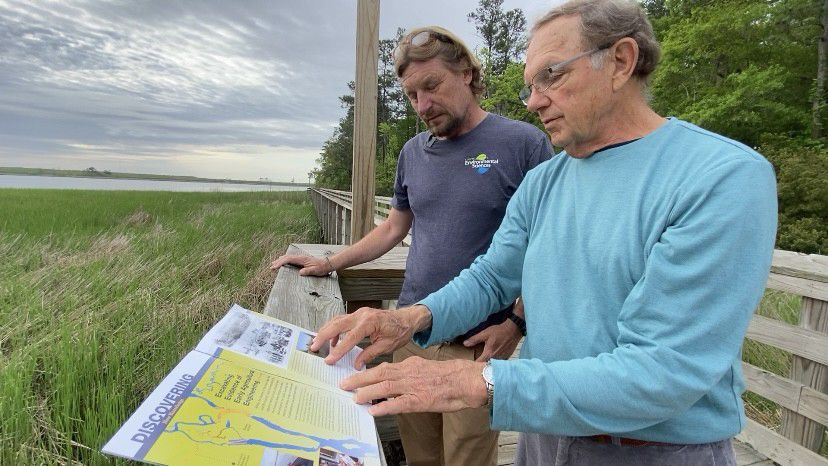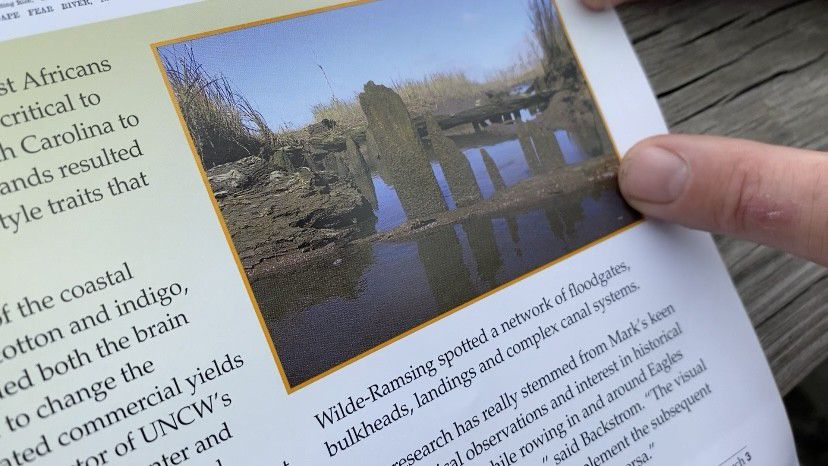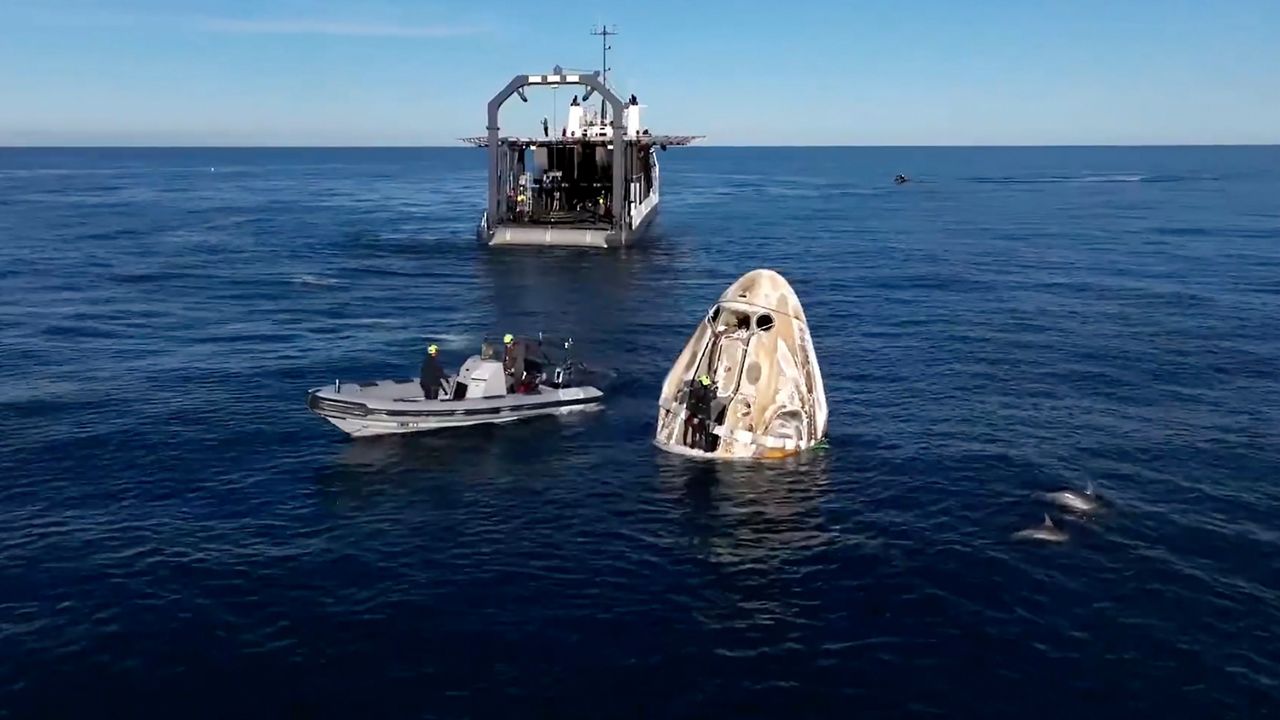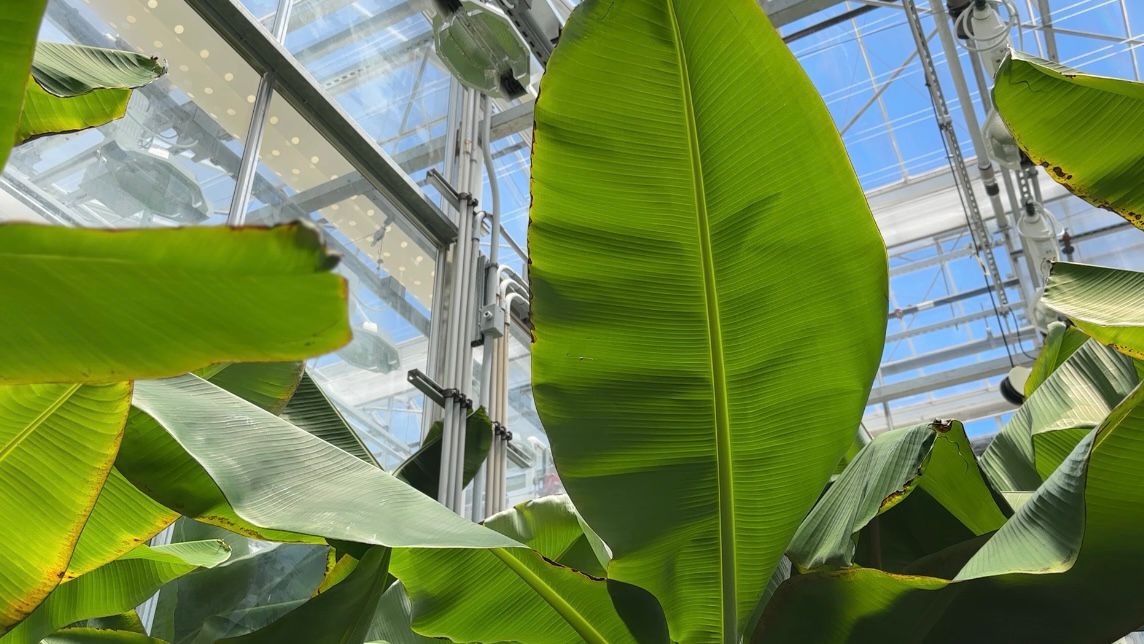North Carolina is filled with history, and on the coast, some of that history is being uncovered.
Remnants of dam and irrigation systems used for rice cultivation were recently found around Eagles Island, an area between the Brunswick and Cape Fear rivers. These were built by the Gullah Geechee people who were brought over as slaves from West Africa to work on rice plantations.
Osku Backstrom, an assistant professor with the Department of Environmental Sciences at UNC Wilmington, and Mark Wilde-Ramsing, former deputy state underwater archaeologist, are no strangers to Eagles Island. In fact, they’ve been exploring the area for the past two years to understand the history the land holds.

“It took a lot to prepare these fields,” Wilde-Ramsing said. “It was arduous, awful work.”
That work was done by the Gullah Geechee, enslaved Africans who were brought to the southeastern United States to work on coastal rice, cotton and indigo plantations. Here in the Eagles Island area, rice was the main cash crop.
“It was huge in the economy — it was rivaling cotton. During around the Civil War it was a huge business,” Wilde-Ramsing said. “Carolina gold rice was known all over Europe and of course the United States.”
And now, this pair of scientists is learning more about the Gullah Geechee methods for rice cultivation. While rowing around the island, Wilde-Ramsing noticed some peculiar old structures.
The structures were only visible at low tide and were hard to see, so he recruited his neighbor, Backstrom, who has a special way of finding things.

“The sonar allows us to acoustically map the seabed or the canal beds, so we’re using sound rather than light,” Backstrom said. “So that way we’re able to capture a lot of these features that otherwise — it’s so turbid with things like cameras — we wouldn’t be able to see anything, or even diving it would probably be very difficult.”
Using sonar, they found 45 different irrigation structures that help shed light on the engineering and technological skills the Gullah Geechee possessed.
“We had different types of dikes and dams where you could control the water that would come in and out,” Backstrom said. “So you’d see a lot of these wooden boards sticking out.”
While many researchers have documented the history and the culture of the Gullah Geechee, this research into their irrigation systems is the first of its kind. It’s also history that could disappear one day.
“Some researchers believe we wouldn’t be able to find these features anymore. Over time, maybe they’ve deteriorated,” Backstrom said. “So it’s nice to kind of bring this back to light using modern technologies. It’s almost like modern technology meets ancient technology.”

Although these structures are just being unearthed now, the history they hold has always been important.
“You need to be aware of the history,” Wilde-Ramsing said, “And in particularly the involvement of Black Americans that contributed so much and were such a vital part to this industry.”
Wilde-Ramsing and Backstrom’s findings were recently published in the Journal of Maritime Archaeology. They say there’s still lots of work to be done with this project and have plans to date these structures and use drones to find more.
You can read more about the study here.










